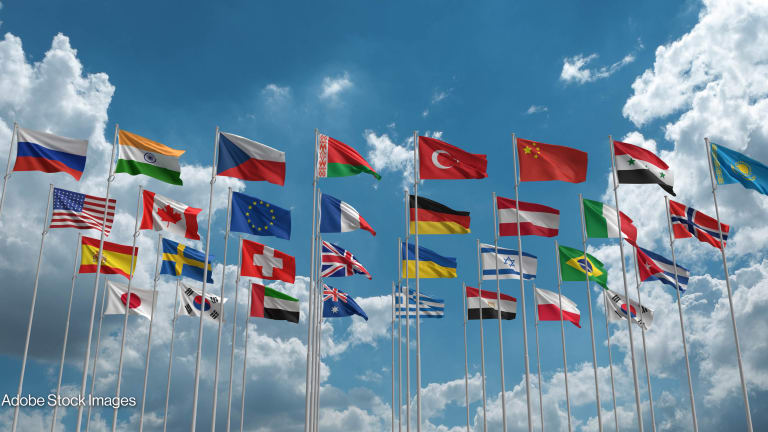
Humanitarian crises are becoming increasingly complex. At the same time, rapidly developing technology means we have access to more data than ever before, allowing us to unravel this complexity. Satellite technology holds incredible promise to help us deal with humanitarian emergencies, but the sector needs to make changes to maximize its transformative potential.
The emergence of the concept of a “humanitarian-development-peace” nexus in the last decade has demonstrated the overlapping impact of what were once considered disparate issues. Climate-related shocks, protracted conflict, political instability, and structural inequality are all contributing to modern humanitarian crises, with the picture further complicated by COVID-19.
According to the U.N. Refugee Agency, 82.4 million people worldwide were displaced at the end of 2020. This record-high number lays bare the unprecedented challenges the sector faces today, as humanitarian relief agencies and governments struggle to tackle these issues in isolation and without a coherent approach.
The United Nations and World Bank’s New Way of Working — which aims to improve coordination, review funding approaches, and align activities toward collective outcomes — is a vital step in the right direction.
In this same period, we have seen the full-blown arrival of the digital age, with claims of data as the “new oil.” We are now living in an era in which a trinity of technologies — satellites, sensors, and smartphones — are generating huge volumes of data about every aspect of daily life.
These [satellite technology-enabled] applications have the potential to help organizations better deliver aid to vulnerable populations.
—Accompanying advances in processing power and data science are enabling that data to be turned into intelligence that was unimaginable 20 years ago. In development, we have seen data applications generate country-level health systems and health facility readiness assessments in Sierra Leone, as well as scale-up cash transfers to impacted communities in Togo.
Service providers have developed dozens of solutions to support agricultural productivity, estimate crop yields, and promote disaster risk financing to address the impacts of crop failure.
This is where space and particularly satellite technologies could transform how we address humanitarian crises. The global coverage of satellites makes it possible to connect or monitor any two points on Earth — no matter how distant they are from each other, how remote either point is, or whether they are in conflict-affected areas.
At Caribou Space, our work over the past five years with space agencies, development organizations, and the satellite industry has focused on how satellite technologies can be used to generate positive outcomes through improved communications, better-informed decision making, and enhanced situational awareness.
Accordingly, we have seen an explosion in applications and solutions designed to support decision making and action by international organizations, first responders, and government ministries all over the world.
For example, the not-for-profit organization iMMAP developed an application to map new informal settlements for migrants in Colombia and the American Association for the Advancement of Science has provided early warning of cross-border conflict.
We have also seen NGOs such as Amnesty International leveraging satellites to observe military operations against Rohingya populations in Myanmar and, more recently, images from DX Open Network of the destruction of refugee camps in Tigray, which were used by the Norwegian Refugee Council.
These applications have the potential to help organizations better deliver aid to vulnerable populations, monitor rapidly developing situations on the ground, and ultimately react to an escalating crisis situation.
However, despite these invaluable innovations, we have so far seen slow progress with the uptake of these technologies, and limited documented evidence of their impact in the humanitarian sector. In short, satellite solutions are falling victim to the same complicating factors that are driving the need for the New Way of Working.
Often scrambled together during humanitarian operations, input data remains scanty and frequently inaccessible to those who need it. A lack of understanding of existing solutions and coordination between different stakeholders means that it is often difficult to know what data exists, which organizations own it, how the data has been used and could be used, and to what effect.
As a result, many humanitarian operations are still lacking vital types of information including data on impacted areas, malnutrition, damaged infrastructure such as buildings and roads, and data on refugees and persons of concern.
When it comes to the use of satellites for humanitarian emergencies, we should be optimistic about the potentially transformative role to be played by the technology. But with the sector rapidly nearing the point at which data availability should no longer be a problem, we must begin to focus on how to make solutions more accessible and more contextually relevant for those who use them.
A worthy first step is to open up a dialogue between application developers and humanitarians, so they can learn more about each other’s requirements, capabilities, and constraints. From this, we can create context-aware workflows that ensure the technology is used where it offers the most value and best practices are applied.
There is still more to do to upskill humanitarians on the potential of this technology and to build capacity to integrate it effectively into their decision making. If we can take these actions on both the supply and demand sides, we may see space and satellite data revolutionize humanitarian crisis resolution.
Caribou Space is currently working with the Foreign, Commonwealth & Development Office-funded U.K. Humanitarian Innovation Hub on a piece of research into the use of satellite-derived data for humanitarian emergencies. We'd love to hear your reflections and personal experiences or stories on this topic. Please consider completing this survey.









